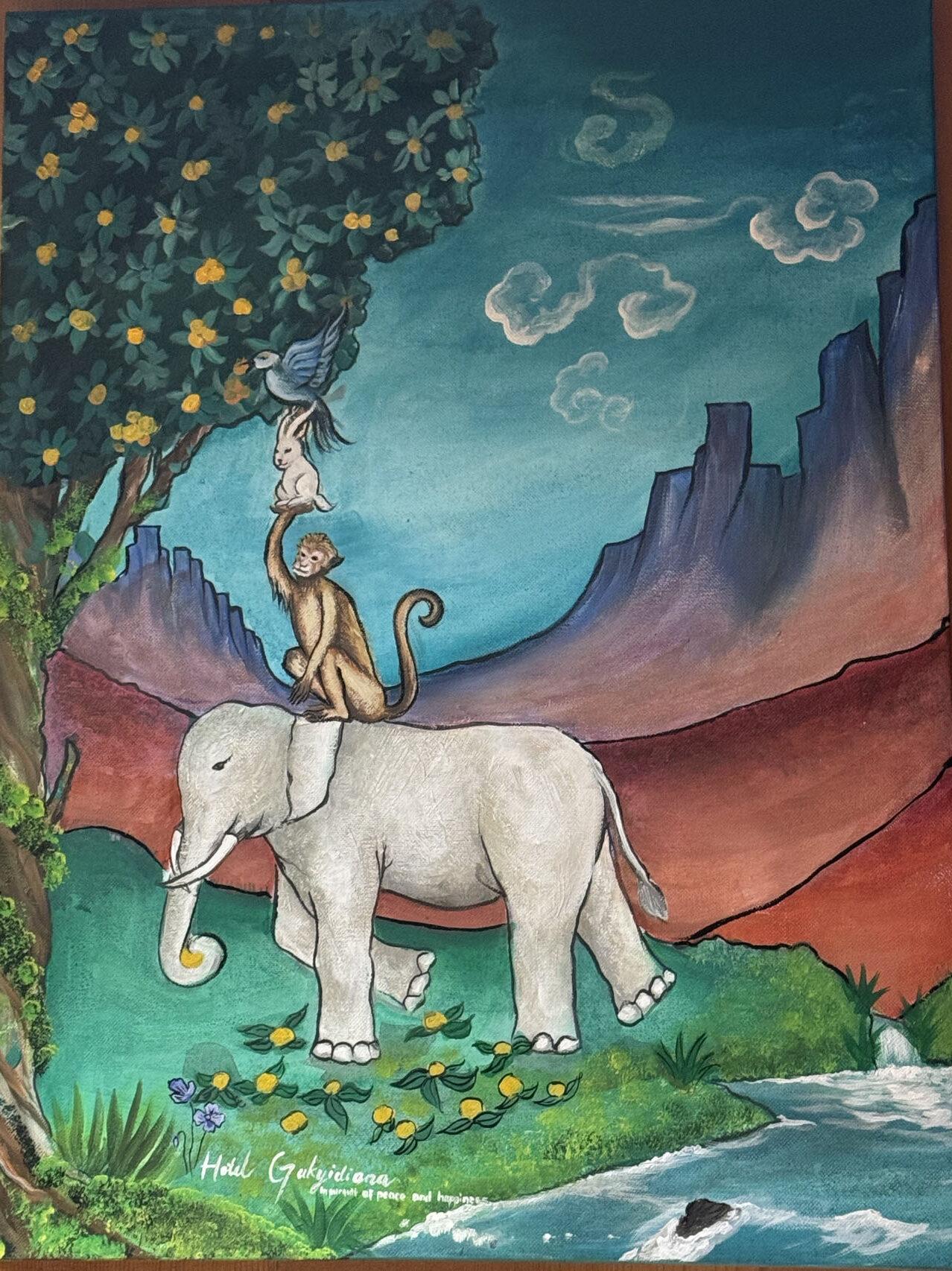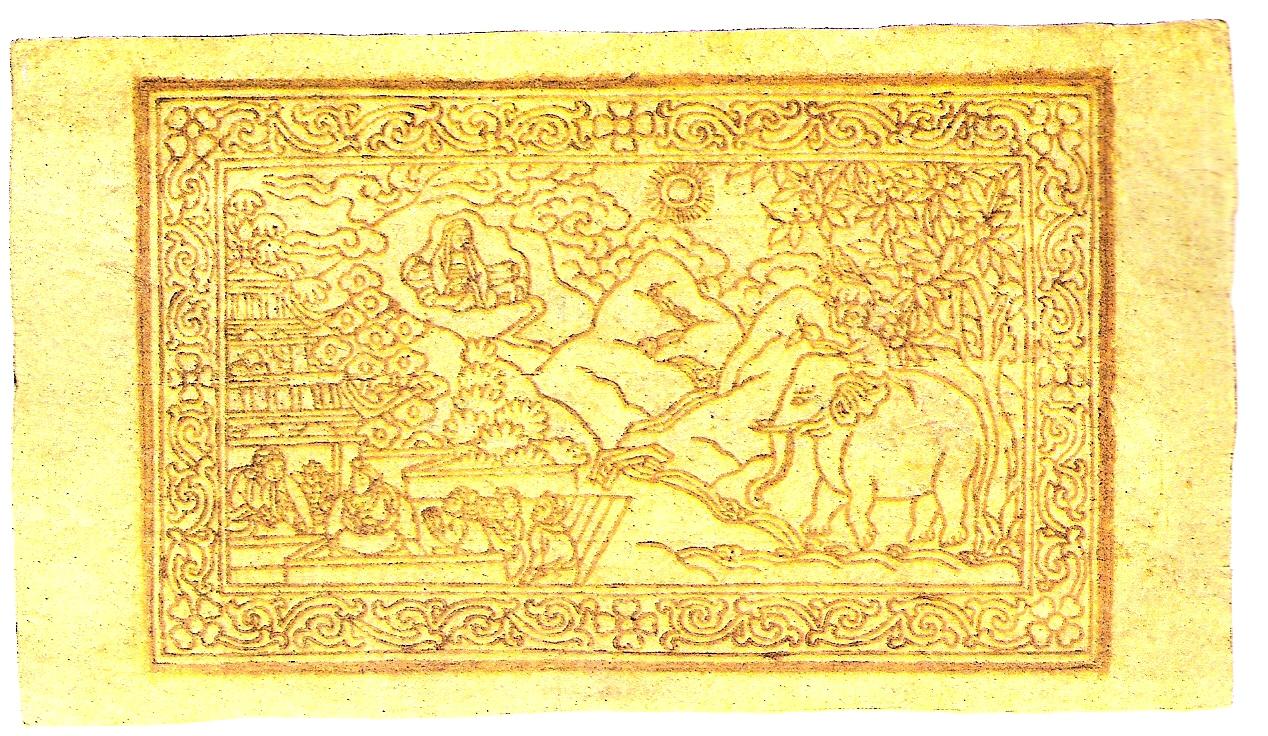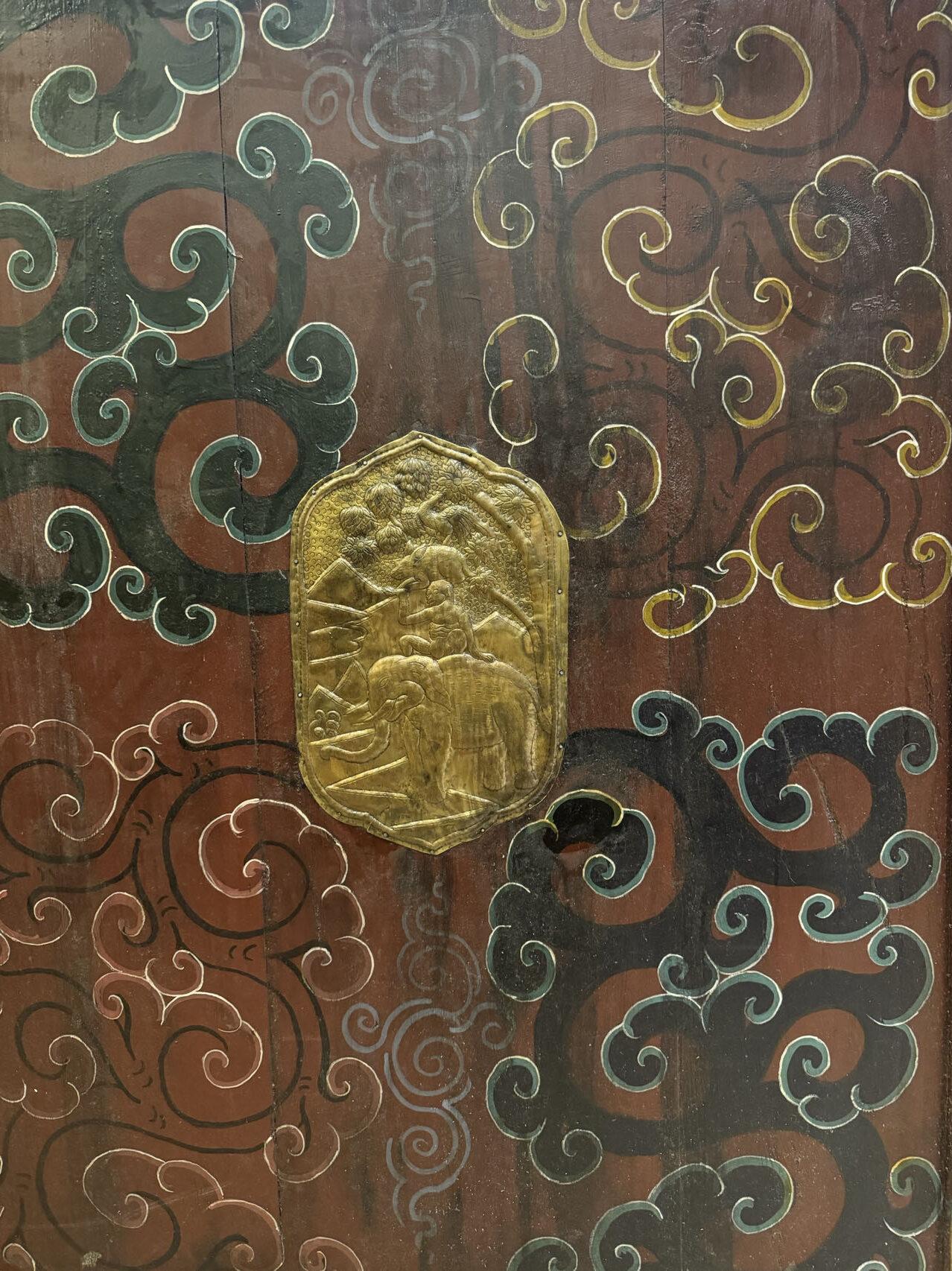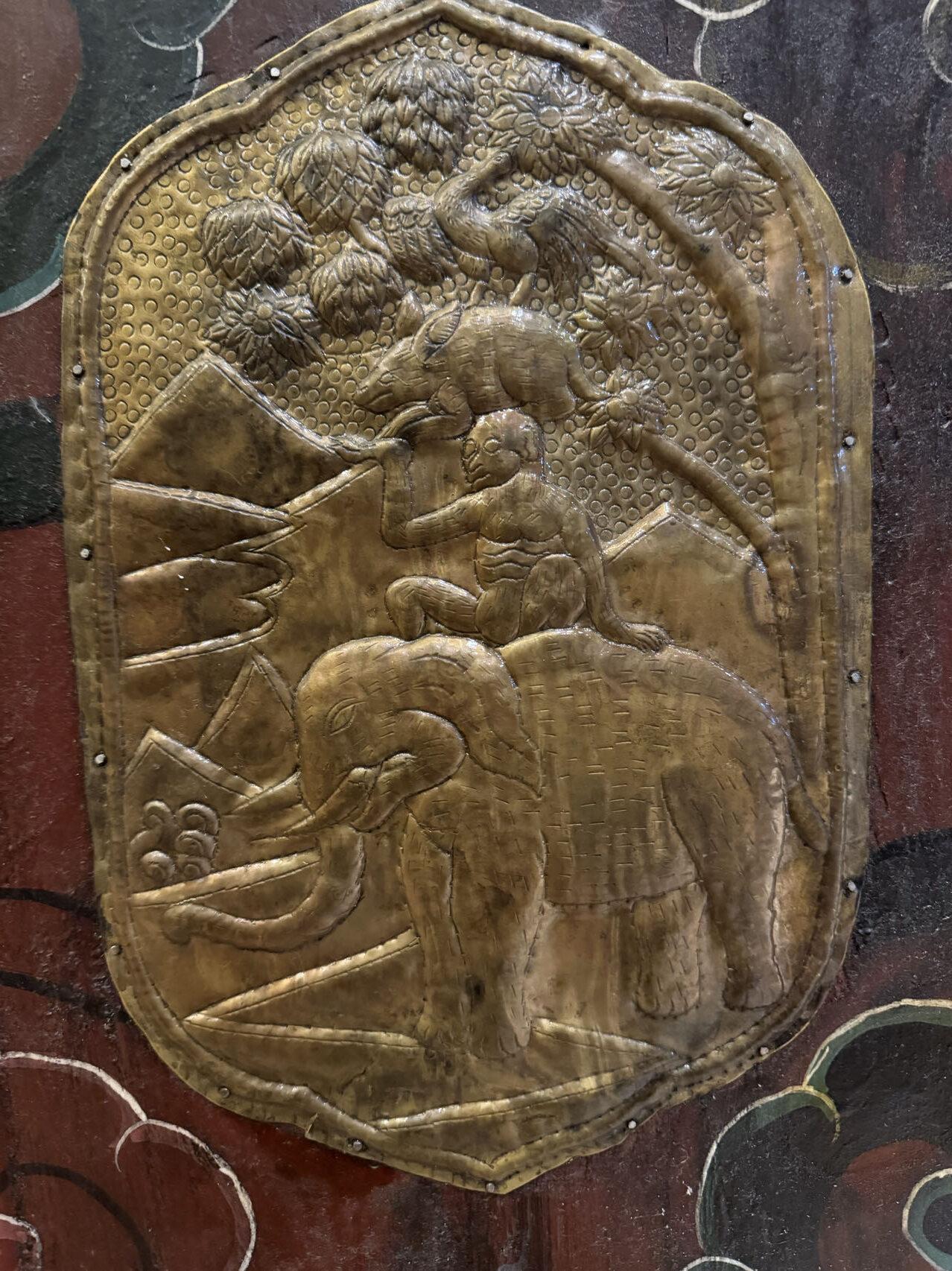
2,600 years ago the Buddha told this story as a lesson in cooperation and respect, after some of his students showed disrespect for the wise Śāriputra, senior disciple of the lineage. Several hundred years later, monks transcribed it onto palm leaves in the Pali language, and many paintings have been made about it. Now the story is a classic legend loved by all people. The image displayed in temples and public places of Bhutan as a blessing to help people remember.
The Story of the Four Harmonious Friends:
Long Ago in the jungles of Asia, all the animals lived like brothers and sisters in friendship and harmony. One day, an elephant, a monkey, a rabbit, and a pheasant bemoaned the sad state of the world. They were very unhappy that there was so little respect held by the young for their elders. The wisdom of the elders was being lost by the young people, who were still learning the higher ways of how to live a happy life. So, the four animals decided to do something to reverse the downward trend, by showing respect for each other following the Buddhist tradition.

But, which animal deserved the greatest respect? In Buddhism the greatest respect is given to the seniors and elderly. So they got together and held a contest to find out which animal was the oldest. They looked around the forest for the oldest tree to compare their ages.
The elephant said that the tree was already fully grown when he was young. The monkey said that the tree was very small when he was young. The rabbit said the tree was a sapling when he was young. At the end the pheasant claimed that he had eaten the seed and excreted it in his poop while flying over the fertile land. Otherwise, the tree would never have been able to grow.
So, clearly the bird was elder to all the others. The bird was recognized by all the other animals as the oldest and most deserving of respect. After agreeing on this hierarchy of respect the four animals lived together in co-dependence and cooperation. The youngest elephant showed respect for the older ones by carrying the monkey on his back. Standing on each others’ backs in this way, the four animals, pheasant, rabbit, monkey, and elephant together were able to reach reached the delicious fruit of the nyän dro da (banyan tree). The Banyan tree exudes a sweet floral fragrance, and produces figs loved by the animals.
They understood their different relationships to the tree and to all of nature. They continued to help each other to enjoy the fruits of the tree for many years.

At the Hotel Gakydiana in Paro, Bhutan
At that time, the political leaders, the king, his ministers, and the general population were very arrogant and big-headed.
They believed that any good times were due to their own selfish actions. The animals searched out an old hermit to explain to them the secret to global peace and wealth and happiness. The hermit through his clairvoyance explained that the countries’ wealth was not due to the power of any of these people, but rather to the merits of the four animals in the forest who were keeping the five precepts of moral conduct and leading the other animals on that path. The hermit said that people’s happiness depends on their accrued virtue from actions in this life and many past lives, in a continuous sequence of accumulation in good times and bad times. The hermit advised them that they, too, should behave like these four animals.
Following the hermit’s advice many of the people began to follow the traditional rules. As a result, on their death, many people were reborn in higher realms. And life on Earth became peaceful and harmonious.
The pheasant taught the other animals how to follow the moral conduct of not killing or taking lives. They did not take what was not given. They did not speak deceptive words. They did not engage in immoral sex. And they did not drink alcohol. In this way these animals instructed all the other animals to follow the Dharma path, to increase the virtue in the world, so that each being in his own way can live clear path to spiritual freedom. Happiness and comfort increased greatly in the world.
Thus, it is believed that every place that shows this picture of the four harmonious brothers, the elephant, monkey, rabbit, and bird, all virtues will increase. The minds of all people will become harmonious and happy. There will be respect for elders, and and auspicious events will occur.

The image was even printed on the backside of Tibetan 25 tam banknote, dated 1659 of the Tibetan Era (= 1913 CE).
In Dzongkha, this image is called Thunpa Puenzhey, or Four Harmonious Friends. This image is found in many temples, murals, and homes. Sometimes the story also describes the animals upholding other precepts of the Dharma and teaching them to others. One of the oldest extant printed forms of this story is in the Pāli language, called the Tittira Jataka.

At the Hotel Gakydiana in Paro, Bhutan

At the Hotel Gakydiana in Paro, Bhutan

Lhasa, Tibet – Jokhang Temple and Drepung Monastery
Sources:
- Photo from Lhasa, Tibet – Jokhang Temple and Drepung Monastery
- Image Source: https://sonyaandtravis.com/images/tibet-2012/lhasa-tibet-drepung-monastery-s-four-animal-friends-an-elephant-a-monkey-a-rabbit-and-a-bird-positioned-on-top-of-each-other.jpg
- https://www.thezengateway.com/culture/the-story-of-the-four-harmonious-friends
- https://en.wikipedia.org/wiki/Four_harmonious_animals


